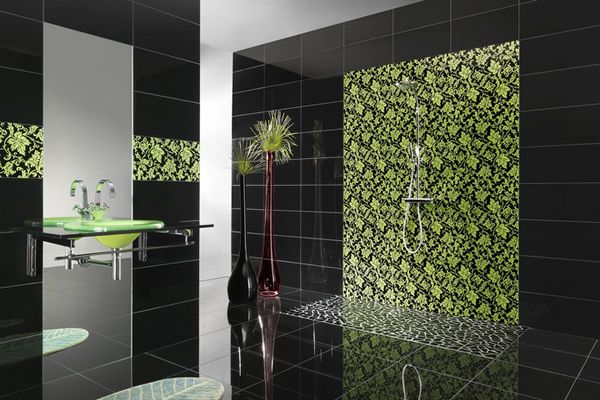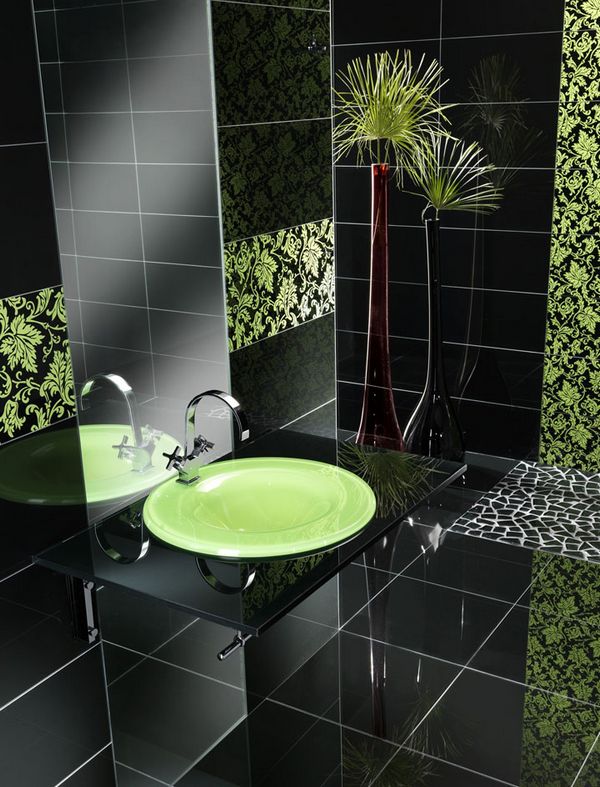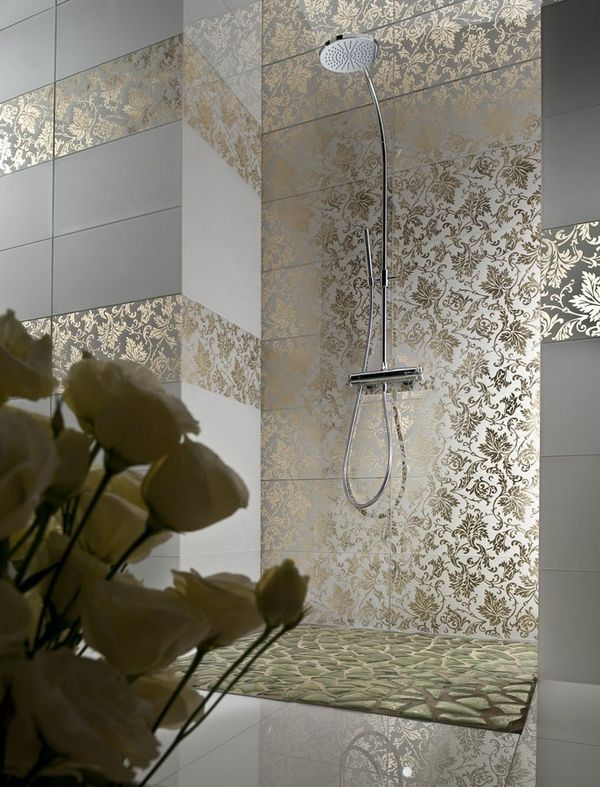The hottest commodity for 2012 home appliances are the sleek modern looking designs. But who can blame them, they look amazing and make you feel like you are up-to-date with these innovations.
What tops America’s home improvement list?
Houzz has become an invaluable resource for homeowners and other consumers who are researching, planning and managing remodeling, building and decorating projects, giving us unique insight into what projects are getting the most attention, and in which regions of the country.
The Joint Center for Housing studies recently stated that home remodeling activity is expected to remain weak through the first half of 2012. Given the enormous volume of activity on Houzz, from saving and sharing ideas to researching and contacting building, remodeling and design professionals, we wanted to answer the question: in this economy, where are people focusing their home improvement efforts?
We are sharing those insights with our community in a study and infographic entitled “What tops America’s home improvement list?” released today. The data provides unique insights into the type and relative volume of planning and research activity occurring for specific home improvement projects, insights that can help guide the marketing efforts of home design professionals, retailers and manufacturers.
Some of the key findings include:
- Americans increase their home improvement activity around closets and entryways in the fourth quarter
- Most major metros make kitchens the top priority, but Los Angeles and Miami gave bathrooms the top spot
- San Francisco, Seattle and Miami prefer modern or contemporary kitchens; other metros opt for more traditional styling.
More good stuff at Houzz.com
28 Ways to Customize Your Kitchen for Less
1. Zinc-top prep table: Use a potting bench to stand in for an island; its shelf can hold pots for cooking just as easily as ones for planting. Finish it to match your cabinets, or use an accent color to make it a focal point. One we like: Living Accents bench, about $240; Ace Hardware
2. Warm wood counters: Gentle on knives and simple to install yourself, butcher block is one of the most popular—and affordable—countertop materials. Choose long, edge-grain strips or blocky end grain. A ½-inch-thick-by-26-inch-square beech slab, about $29; Ikea
3. Skirted sink: A curtain on a $7 rod handily hides cleaning supplies and plumbing and adds a welcome hit of color and pattern. Buy a fabric remnant and stitch it yourself or have a tailor sew it to your specs. Find designer prints for under $10 per yard; Joyce Fabrics
4. Pendants with patina: Repro lights can cost more than the real deals. You pay for new wiring and the ease of not having to troll salvage yards. But these days many dealers refurbish their old lights, and the search is half the fun. Find ready-to-install vintage industrial pendants like these, about $100 to $225; Portland Architectural Salvage
5. Metal backsplash: A nod to commercial kitchen backsplashes, galvanized-steel roofing forms a fire-safe barrier between the range and the wall. Make yours using Galvalume Ribbed Steel Roof Panels, about $32 per 38-by-144-inch piece; Lowes
6. Stylish score: A hanging plate rack doubles as a dramatic window treatment. Get a similar one, about $130; Plow & Hearth
Read the rest here at ThisOldHouse.com
3 Hot Trends for Bathroom Remodeling in 2012
 From toilets that double as sound systems to water-conserving spa experiences, here’s what’s trendy for bathroom improvements for 2012.
From toilets that double as sound systems to water-conserving spa experiences, here’s what’s trendy for bathroom improvements for 2012.
Trend #1: Conservation rules
All around the country, water reserves are stressed. In response, regional governments are implementing conservation measures. As a result, there are likely to be new regulations that’ll affect your construction or remodeling plans. Here’s what to watch for:
Your new toilet will have a lower flush-per-gallon rating than the one that’s in there now. Consider a dual-flush version, or any low-flow toilet coming on the market that meets your style preferences. At the very least, your next commode is likely to feature a 1.28 gallon-per-flush rating — better than even the most-recent 1.6 GPF offerings.You’ll find them at home improvement centers from $100 to luxury showroom models for thousands more.
The WaterSense label, launched in 2006 by the Environmental Protection Agency to promote water conservation by plumbing manufacturers and home owners, will become as well-known as Energy Star. You’ll be shopping for low-flow shower heads and faucets with the WaterSense symbol on the box. Just as with Energy Star appliances, there is no cost premium associated with WaterSense savings — there are faucets in every price range. WaterSense shower heads are newer on the market, with a more limited selection today — mostly at more affordable prices.
You’ll start seeing more shower heads — especially rain shower models — using Venturi principles that deliver strong water pressure by adding air, not water, to the mix. They’re available in every price range, from ultra-affordable standard heads to luxury rain showers.
Trend #2: Technology advances
You may not think of your bathroom as a high-tech space, but that’s about to change. Here are some of the trends that can benefit your home:
You’ll be able to create a custom showering experience more affordably than ever. For $300 for simple controllers to $3,500 or more for a complete luxury installation,programmable showers let you digitally set your preferred water temperature, volume, and even massage settings before you step in. To achieve a personalized showering experience, you’ll need a 120-volt power source, and a thermostatic valve and controller in addition to your standard shower head or heads. Luxury models may include a steam system, a wi-fi source for music, multiple body spray outlets, tankless water heater, and a secondary controller to start the system from another room.
Dock your iPhone or MP3 player directly with your speaker-equipped, high-tech toiletso you can entertain yourself on the commode. While you’re not likely to invest $4,000 to $6,000 for a Kohler Numi toilet using this technology today, start looking for competitive models later in the year with lower prices.
Catch up on news and weather while you brush your teeth. Television screens are being integrated into medicine cabinets and vanity mirrors. Cost? Early entries to the market command a premium $2,200 to $2,400 price tag.
Plug your smart phone or MP3 player into your medicine cabinet so you won’t miss a call or song while getting ready for work or bed. A built-in jack keeps your unit charged (and away from wet countertops) and linked into a built-in speaker system.
Trend #3: Aging demographics emphasize safety
It’s not just high-tech that’s bringing an “experience” to the bathroom. Trends in universal design features add comfort, convenience, and safety. But that doesn’t mean your bathroom has to look institutional. Here are some universal design innovations that can factor helpfully (and stylishly) into your 2012 bath remodeling plans:
Sleek, low-profile linear drains are ideal for creating safe, zero-threshold shower designs. Unlike standard round drain covers that are typically mounted near the front end of a shower, these long, straight drains can be installed in different locations to minimize the slope of the shower floor. One popular location is at the outside edge of the shower, creating a wheelchair-friendly curbless shower. More offerings in more finishes — including nearly invisible tile-in channel models that are largely covered by shower floor tile — are becoming the standard for upscale spaces. You’ll spend $500 to $900 for a quality linear drain.
The rapidly-expanding selection of porcelain, glass, and ceramic tiles makes it easy to find slip-resistant, low-maintenance floors that don’t skimp on style. Expect to see faux wood, linen, and uniquely-textured looks for tiled bathroom floors and walls in 2012. The texture adds both visual impact and better traction for wet feet.
The accessible tub is no longer limited to the high-walled, narrow-door format that dominated the market in the last decade. Newer models, such as Kohler’s Elevance ($5,100), employ rising panels in front that give more of a traditional tub look with easier entry and exit. Others use standard hinged, sealed doors, but are increasing door width by several inches for better accessibility and appearance.
What improvements — big or small — are you planning for your bathroom this year?
By: Jamie Goldberg
3 Hot Trends for Kitchen Remodeling in 2012
 Mulling a kitchen remodel but want to keep costs low? You’re au courant with today’s trends that emphasize options and high-tech wizardry at affordable prices.
Mulling a kitchen remodel but want to keep costs low? You’re au courant with today’s trends that emphasize options and high-tech wizardry at affordable prices.
Trend #1: Remodeling scales back
A new focus on moderation and value has entered the remodeling mind-set. Trends that are likely to show up in your kitchen next year include:
You’ll repair your existing appliances instead of replacing them, extending their life with good maintenance and care. If you’re replacing cabinets, you’re likely to build around your current appliances rather than choosing new models.
You’re scaling back your cabinetry purchases, with an increased emphasis on kitchen storage and functionality over elaborate decoration. For example, rather than stacked crown moldings throughout the kitchen, you’ll put your money into practical roll-out trays and drawer organizers.
Small-scale kitchen projects are big news. Changing out cabinet hardware, replacing a faucet, and refacing your cabinets upgrades your kitchen without major expense.
Trend #2: Simpler, warmer styles dominate
Fussiness and excess have faded away in favor of pared-back looks that present a more timeless, value-conscious style.
Cabinet decoration continues to streamline. For example, massive corbels, once fashionable as undercounter supports, will give way to sleeker countertop supports and cantelivered countertop edges. Stacked moldings will pare back or disappear entirely. Elaborately glazed finishes will yield to simpler paints and stains.
Kitchen finishes will continue to get warmer and darker, and feature natural and stained woods. Walnut especially is growing in popularity.
Laminate countertops will continue to surge in popularity, especially in contemporary design. The latest European-inspired laminates offer more textured and naturalistic finishes than ever before. While exotic wood kitchen cabinets are out of reach for most home owners, glossy, look-alike laminate versions can be had for about one-third the price.
Trend #3: Technology expands its kitchen presence
Many of the techno products and trends that relate to your smartphones and tablets have just started making their way into your local showrooms and home centers.
Appliances will be equipped with USB ports and digital screens so you can display your family photographs and kids’ artwork.
Smart, induction built-in cooktops ($500-$3,000) remember your temperature settings as you move your pans across their entire surface.
One light finger touch is all it takes to open the electronically controlled sliding doors of your kitchen cabinets — a boon to people with limited mobility. You’ll pay 40% to 70% more for cabinets with electronically controlled doors than standard models.
You’ll be able to use your smart phones and tablets to control lights and appliance settings from anywhere you have a wi-fi connection, as well as to shop for appliances from major manufacturers.
You’ll be opting for LEDs for your recessed lights, under-cabinet task lighting and color-changing accent lighting. You’ll see more LED-powered pendants and chandeliers from major manufacturers as inefficient incandescent bulbs continue their march toward extinction.
A wide selection of affordable microwave ovens with convection and even steam features gives owners of smaller kitchen spaces more high-end cooking power.
What improvements — big or small — are you planning for your kitchen this year?
By: Jamie Goldberg
Elegant Glass Tiles To Make Your Bathroom Sparkle
Love these glossy and elegant glass tiles by Italian Vetocolor Sleek. Come in variety of colors, patterns and shapes so that you can select according to your choice and space. Vetocolor Sleek’s tiles are just stunning and in a moment their highly detailed artistic patterns capture your attention. Vetocolor also offers a range of ready-made glass wall panels that can be matched anywhere in kitchen or bathrooms.
When to Buy and When to DIY
 Is this the year of do-it-yourself projects? A new survey suggests it might be.
Is this the year of do-it-yourself projects? A new survey suggests it might be.
According to a JPMorgan Chase poll, “people are taking steps to achieve their goals – and have fun – on their own terms this year.” Here are some of the company’s DIY-related findings:
- 46 percent will exercise at home or outdoors instead of at a gym or health club.
- 59 percent will pamper themselves at home rather than making visits to a spa or salon, which only 22 percent plan to do.
- 29 percent prefer to celebrate a special occasion with a home-cooked meal instead of dining out.
All of these are smart and simple ways to save money at home. Unless you’re just trying to make a superior or unique project, that’s the main goal of DIY work.
Unfortunately, the DIY ethic doesn’t always save money, time, or sanity. If you’ve ever learned the hard way that we have pro services for a reason, here are some factors to consider before tackling another project on your own:
Time.
How valuable is your leisure time? Big projects might require several nights or multiple weekends, and you’ll need to keep tools and supplies somewhere in the meantime. Plus, if you have to dismantle something in the process, it’s out of order until you’re done. This can make long projects or ones in important areas of the house (like the kitchen) pretty inconvenient.
Tools.
Specialized tools can be expensive, and you may not need them again. If you don’t have a friend willing to loan what you need, that means more time and expense in hunting down and buying tools or renting them.
Experience.
How confident are you that your skills are suited to the project at hand? Are there safety risks? Permits required for the work? If you screw up, you have to call a pro anyway – and they may have to fix damage from your mistakes on top of accomplishing the original project. That adds insult to pocketbook injury.
Interest.
If you’re taking on the work as much to learn as to finish a project, then your time will probably be better spent and more enjoyable than a stubborn, grumbling penny-pincher’s. It’s not worth it when the work makes you miserable and leaves you unsatisfied.
Replaceability.
Some things are just cheaper to replace than to fix and most low-end electronics fall into this category. Parts can be hard to find or pricey in comparison. The only time it’s worth spending more on a DIY project than you would to buy it outright is if you get something superior or unique (sentimental value, knowledge, custom-make) out of it.
So what makes a good do-it-yourself project for the average person with no special skills? Here are some scenarios of when to buy and when to DIY:
Food
Buy: Most staples are cheap to buy in bulk – like rice and flour. Some things you should always buy generic. Stock up on the ingredients to your favorite menu items, then learn to make them yourself. Just make sure you know when your food expires so nothing goes to waste or makes you sick.
DIY: If you’ve got the space, start a garden. Seeds are much cheaper, and the food is often much tastier, than store-bought veggies. You can also consider making your own dog food, homemade yogurt, and flavored water.
Cleaning
Buy: Sturdy equipment – cheap mops and sponges end up costing more when you have to replace them often.
DIY: Homemade cleaners are both effective and cost-effective. Learn about the wonders of vinegar and how to make dish soap, laundry detergent, and all-purpose cleaners.
Clothes
Buy: Most things, unless you’re obsessed about quality or took that arts and crafts class seriously. Without practice and knowledge about materials, this is a time-consuming adventure that could be wrecked by the washing machine. Fortunately, there are ways to save on clothing you buy at the store.
DIY: How about Halloween costumes, which only have to last one night? Or custom accessories that won’t hit the wash? Basic mending, sewing, and hemming skills also go a long way to preserving your wardrobe, and a mini-sewing kit doesn’t cost much.
Home repairs and improvements
Buy: This is where things get risky – in terms of time, cost, and safety. When in doubt, use a pro. Jobs for pros: most additions and installations, major electrical work, paving, windows, gutters.
DIY: A lot of energy-efficiency upgrades are simple enough to do yourself and use cheap materials. Most people can handle painting jobs, drywall, and laminate flooring.
“When to Buy and When to DIY” was proved by MoneyTalksNews.com.





















